26 aug 2020
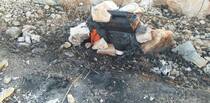
A Palestinian activist today accused the Israeli military of planting explosives in the village of Kufr Qaddoum in the north of the West Bank with the intention of hurting civilians.
Murad Shteiwi, coordinator of Popular Resistance in Kufr Qaddoum, said Israeli occupation soldiers planted three explosive devices in boxes in the village after they had stormed the eastern area of the village near a water reservoir and a public park on Tuesday and Wednesday and that the devices were discovered on Thursday.
He said one of the boxes exploded and slightly wounded a village resident in his 30s in his hand and eye, while the second box was detonated after stones were thrown at it and its explosion was stronger than the first.
The occupation army then returned to the village detonated the third bomb apparently to hide its actions.
Shteiwi said that on Tuesday of the same week, some of the children in the village noticed cardboards with Hebrew inscriptions warning anyone who approaches that area of death or being blown up.
He pointed out that a group of women, accompanied by children, were wandering in that area before one of them discovered the explosives in orange boxes and covered with pieces of cloth usually used by the occupation army as a camouflage.
He said that after the occupation army has failed in suppressing the village’s weekly protests for the past nine years, it has resorted to this deadly method in order to deter the people and stop the popular resistance, pointing to what was published by the Israeli newspaper, Ha'aretz, in which soldiers from the Nahal unit admitted to planting these devices to deter citizens.
Murad Shteiwi, coordinator of Popular Resistance in Kufr Qaddoum, said Israeli occupation soldiers planted three explosive devices in boxes in the village after they had stormed the eastern area of the village near a water reservoir and a public park on Tuesday and Wednesday and that the devices were discovered on Thursday.
He said one of the boxes exploded and slightly wounded a village resident in his 30s in his hand and eye, while the second box was detonated after stones were thrown at it and its explosion was stronger than the first.
The occupation army then returned to the village detonated the third bomb apparently to hide its actions.
Shteiwi said that on Tuesday of the same week, some of the children in the village noticed cardboards with Hebrew inscriptions warning anyone who approaches that area of death or being blown up.
He pointed out that a group of women, accompanied by children, were wandering in that area before one of them discovered the explosives in orange boxes and covered with pieces of cloth usually used by the occupation army as a camouflage.
He said that after the occupation army has failed in suppressing the village’s weekly protests for the past nine years, it has resorted to this deadly method in order to deter the people and stop the popular resistance, pointing to what was published by the Israeli newspaper, Ha'aretz, in which soldiers from the Nahal unit admitted to planting these devices to deter citizens.
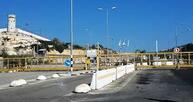
Israeli soldiers shot and injured today a Palestinian man near the separation wall in the north of the West Bank, according to local sources.
They said that Mamoun Qalalweh, 27, from al-Jadida village, southwest of Jenin, was shot in the leg near an Israeli army checkpoint.
Qalalweh was taken to hospital in Jenin where he was reported in moderate condition.
The circumstances of his shooting were not immediately known.
They said that Mamoun Qalalweh, 27, from al-Jadida village, southwest of Jenin, was shot in the leg near an Israeli army checkpoint.
Qalalweh was taken to hospital in Jenin where he was reported in moderate condition.
The circumstances of his shooting were not immediately known.
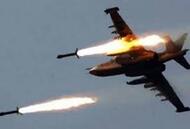
Israeli warplanes Wednesday early morning struck a site to the east of Khan Younis city in the southern besieged Gaza Strip, according to WAFA correspondent.
He confirmed that an Israeli reconnaissance plane fired two rockets toward a plot of agricultural land, situated to the east of Khuza‘a town, east of Khan Younis, before the site was targeted once again with three missiles fired by an Israeli warplane, causing extensive destruction to the site and damages to the nearby houses, but no injuries.
The latest attacks follow over two week of heightened tensions, during which Israel closed the Karem Abu Salem goods crossing with the strip, shut down the coastal fishing zone, and halted the supply of fuel, forcing Gaza’s sole power plant to stop operating.
Israel claims the attacks and other punitive measures came in retaliation for the flying of incendiary balloons from Gaza into bordering Israeli sites.
Fourteen years following the Israeli “disengagement” from Gaza, Israel has not actually disengaged from Gaza; it still maintains control of its land borders, access to the sea and airspace.
Two million Palestinians live the Gaza Strip, which has been subjected to a punishing and crippling Israeli blockade for 12 years and repeated onslaughts that have heavily damaged much of the enclave’s infrastructure.
Gaza’s 2-million population remains under “remote control” occupation and a strict siege, which has destroyed the local economy, strangled Palestinian livelihoods, plunged them into unprecedented rates of unemployment and poverty, and cut off from the rest of the occupied Palestinian territories and the wider world.
Gaza remains occupied territory, having no control over its borders, territorial waters or airspace.
Meanwhile, Israel upholds very few of its responsibilities as the occupying power, failing to provide for the basic needs of Palestinian civilians living in the territory.
Every two in three Palestinians in Gaza is a refugee from lands inside what is now Israel. That government forbids them from exercising their right to return as enshrined in international law because they are not Jews.
He confirmed that an Israeli reconnaissance plane fired two rockets toward a plot of agricultural land, situated to the east of Khuza‘a town, east of Khan Younis, before the site was targeted once again with three missiles fired by an Israeli warplane, causing extensive destruction to the site and damages to the nearby houses, but no injuries.
The latest attacks follow over two week of heightened tensions, during which Israel closed the Karem Abu Salem goods crossing with the strip, shut down the coastal fishing zone, and halted the supply of fuel, forcing Gaza’s sole power plant to stop operating.
Israel claims the attacks and other punitive measures came in retaliation for the flying of incendiary balloons from Gaza into bordering Israeli sites.
Fourteen years following the Israeli “disengagement” from Gaza, Israel has not actually disengaged from Gaza; it still maintains control of its land borders, access to the sea and airspace.
Two million Palestinians live the Gaza Strip, which has been subjected to a punishing and crippling Israeli blockade for 12 years and repeated onslaughts that have heavily damaged much of the enclave’s infrastructure.
Gaza’s 2-million population remains under “remote control” occupation and a strict siege, which has destroyed the local economy, strangled Palestinian livelihoods, plunged them into unprecedented rates of unemployment and poverty, and cut off from the rest of the occupied Palestinian territories and the wider world.
Gaza remains occupied territory, having no control over its borders, territorial waters or airspace.
Meanwhile, Israel upholds very few of its responsibilities as the occupying power, failing to provide for the basic needs of Palestinian civilians living in the territory.
Every two in three Palestinians in Gaza is a refugee from lands inside what is now Israel. That government forbids them from exercising their right to return as enshrined in international law because they are not Jews.
25 aug 2020
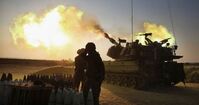
Israeli warplanes and tanks at dawn Tuesday bombed different areas in Rafah and Khan Yunis in the southern area of the Gaza Strip.
Local sources told the Palestinian Information Center’s reporter that Israeli warplanes fired two missiles at a Palestinian agricultural land east of Rafah City.
At the same time in Khan Yunis, Israeli tanks stationed at the borderline opened fire at two observation posts east of Khan Yunis City.
No injuries were reported in the attacks, but the buildings neighboring the bombed targets suffered partial damages.
The Israeli occupation army issued a statement saying that the attacks came in response to fire balloons launched from the Gaza Strip towards adjacent Israeli settlements.
The Israeli military has been bombing the Gaza Strip on a daily basis since 10 August, making matters worse in the besieged enclave amid exacerbation in the coronavirus and electricity crises.
Local sources told the Palestinian Information Center’s reporter that Israeli warplanes fired two missiles at a Palestinian agricultural land east of Rafah City.
At the same time in Khan Yunis, Israeli tanks stationed at the borderline opened fire at two observation posts east of Khan Yunis City.
No injuries were reported in the attacks, but the buildings neighboring the bombed targets suffered partial damages.
The Israeli occupation army issued a statement saying that the attacks came in response to fire balloons launched from the Gaza Strip towards adjacent Israeli settlements.
The Israeli military has been bombing the Gaza Strip on a daily basis since 10 August, making matters worse in the besieged enclave amid exacerbation in the coronavirus and electricity crises.
24 aug 2020
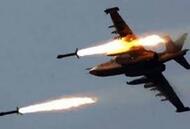
Israeli warplane and artillery bombed early this morning a couple of sites in the south of the besieged Gaza Strip causing damage but no human casulties, according to WAFA correspondent.
He said that a warplane fired three missiles at a site northeast of Khan Younis causing a deep hole in the ground. No human casualties were reported, however.
Meanwhile, Israeli artillery fired a number of shells at a site to the east of Rafah, destroying it and setting it on fire without causing human injuries.
Intermittent Israeli areal, land and sea attacks on the impoverished and devastated Gaza Strip have continued for the second week in a row under the pretext of retaliation to rocket and incendiary balloon attacks from Gaza into Israel.
Israel has also tightened the 13-year long blockade on Gaza by banning entry of all sorts of goods, mainly fuel, disrupting daily life.
He said that a warplane fired three missiles at a site northeast of Khan Younis causing a deep hole in the ground. No human casualties were reported, however.
Meanwhile, Israeli artillery fired a number of shells at a site to the east of Rafah, destroying it and setting it on fire without causing human injuries.
Intermittent Israeli areal, land and sea attacks on the impoverished and devastated Gaza Strip have continued for the second week in a row under the pretext of retaliation to rocket and incendiary balloon attacks from Gaza into Israel.
Israel has also tightened the 13-year long blockade on Gaza by banning entry of all sorts of goods, mainly fuel, disrupting daily life.
23 aug 2020

The Israeli occupation navy on Sunday attacked Palestinian fishermen and their boats during their presence within less than one nautical mile off the western shore of Gaza port.
Coordinator of the fishermen’s union in Gaza Zakariya Bakr said that Israeli gunboats escalated their aggression recently against fishing boats and launched attacks on them within less than one nautical mile after they used to attack them within three nautical miles.
Bakr said the Israeli closure of Gaza sea, which continued for the seventh consecutive day, deprives Gaza fishermen of their daily sustenance and increases their families' suffering.
Before the current tension in Gaza, the Israeli navy was also attacking and harassing fishermen almost on a daily basis, with no reason.
Under the 1993 Oslo accords, Palestinian fishermen are permitted to fish up to 20 nautical miles off the coast of Gaza, but since then Israel has kept reducing the fishing area gradually to a limit between six to three nautical miles.
Coordinator of the fishermen’s union in Gaza Zakariya Bakr said that Israeli gunboats escalated their aggression recently against fishing boats and launched attacks on them within less than one nautical mile after they used to attack them within three nautical miles.
Bakr said the Israeli closure of Gaza sea, which continued for the seventh consecutive day, deprives Gaza fishermen of their daily sustenance and increases their families' suffering.
Before the current tension in Gaza, the Israeli navy was also attacking and harassing fishermen almost on a daily basis, with no reason.
Under the 1993 Oslo accords, Palestinian fishermen are permitted to fish up to 20 nautical miles off the coast of Gaza, but since then Israel has kept reducing the fishing area gradually to a limit between six to three nautical miles.

The Israeli occupation forces (IOF) on Sunday morning tightened the noose on Palestinian workmen as they were heading for workplaces in Israel through several crossings in the West Bank province of al-Khalil and attacked many of them with tear gas.
According to local sources, the IOF detained dozens of West Bank workers near the Dhahiriya crossing in southern al-Khalil.
The IOF also intensified its presence at openings in the separation fence in al-Khalil, which are used by workers to reach their workplaces.
Many workers were also showered by the IOF with tear gas canisters near the Tarqumiyah crossing in western al-Khalil.
According to local sources, the IOF detained dozens of West Bank workers near the Dhahiriya crossing in southern al-Khalil.
The IOF also intensified its presence at openings in the separation fence in al-Khalil, which are used by workers to reach their workplaces.
Many workers were also showered by the IOF with tear gas canisters near the Tarqumiyah crossing in western al-Khalil.
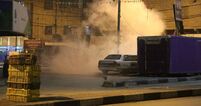
A Palestinian young man was injured at dawn Sunday and several others were kidnaped after the Israeli occupation forces (IOF) stormed al-Jalazon refugee camp in northern Ramallah, raided homes and clashed with local youths.
According to local sources, a large number of Israeli soldiers raided homes and interrogated citizens in Jalazon camp, which provoked clashes with local youths.
One young man in his 20s suffered a bullet injury in his thigh and was rushed to a hospital in Ramallah.
Five young men were kidnaped from their homes during the IOF campaign in the camp.
In a separate incident, the IOF raided the house of human rights activist Bilal al-Tamimi in Nabi Saleh village in the northwest of Ramallah and kidnaped his 21-year-old son Mohamed.
Tamimi reported that the IOF detained his family members in one of the rooms and physically assaulted them as they were hauling his son and taking him away.
According to local sources, a large number of Israeli soldiers raided homes and interrogated citizens in Jalazon camp, which provoked clashes with local youths.
One young man in his 20s suffered a bullet injury in his thigh and was rushed to a hospital in Ramallah.
Five young men were kidnaped from their homes during the IOF campaign in the camp.
In a separate incident, the IOF raided the house of human rights activist Bilal al-Tamimi in Nabi Saleh village in the northwest of Ramallah and kidnaped his 21-year-old son Mohamed.
Tamimi reported that the IOF detained his family members in one of the rooms and physically assaulted them as they were hauling his son and taking him away.
22 aug 2020
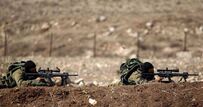
The Israeli occupation forces (IOF) on Saturday morning opened machinegun fire towards swaths of cultivated land and shepherds in the besieged Gaza Strip.
According to local media sources, Israeli soldiers opened fire at a group of shepherds in the east of al-Bureij refugee camp in central Gaza and forced them to leave the area.
An agricultural area in the east of al-Qarara town in the east of Khan Yunis, south of Gaza, also came under similar gunfire attack.
Luckily, no one was hurt in the shooting attacks.
According to local media sources, Israeli soldiers opened fire at a group of shepherds in the east of al-Bureij refugee camp in central Gaza and forced them to leave the area.
An agricultural area in the east of al-Qarara town in the east of Khan Yunis, south of Gaza, also came under similar gunfire attack.
Luckily, no one was hurt in the shooting attacks.
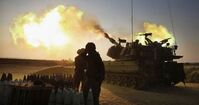
The Israeli occupation army at dawn Saturday shelled two observation points belonging to the Palestinian resistance in the south of the besieged Gaza Strip, with no reported casualties.
According local sources, Israeli tanks behind the security fence opened fire at and then shelled an observation point in the east of Khuza’ah town in the east of Khan Yunis.
Another artillery attack also targeted an observation point in the east of Karam Abu Muammar area in Rafah.
The artillery shelling caused material damage to the sites.
On Friday evening, the Israeli army claimed its anti-missile batteries intercepted a rocket fired from Gaza towards Sderot settlement.
Israeli Army Shells Gaza, Navy Opens Fire at Palestinian
The Israeli army shelled sites in the besieged Gaza Strip, early Saturday, and its navy opened fire at fishermen’s boats on the Gaza coast, Palestinian WAFA News Agency reported.
WAFA correspondent said Israeli tanks fired two shells at a site east of Khuzaa town, east of Khan Younis in the southern Gaza Strip, causing damage and fire, but no human casualties.
Three more artillery shells were fired at a location east of Rafah city, in the south, destroying the site.
Meanwhile, the Israeli navy opened fire at Palestinian fishing boats at the pier in the northern Gaza Strip, damaging some, WAFA correspondent added.
Israel has escalated the already dire situation for the two million Palestinian civilians in Gaza by closing the fishing zone, blocking fishermen a means to make a living.
Furthermore, Israeli authorities closed the only commercial crossing between Israel and the Gaza Strip, stopping fuel to run the sole power plant in the Strip.
The Israeli army continues to claim that its intense bombardment and shelling of Gaza have been in retaliation for fires set to southern Israeli fields by the incendiary balloons launched from Gaza, as an act of resistance.
Israel’s practice of collective punishment is seen across the occupied territories, from the 13 year long blockade to the bombing of the Gaza Strip, from home demolitions to arbitrary arrests in the West Bank.
“Collective punishment is an inflamed scar that runs across the entire 53-year-old Israeli occupation of Palestine. Over these years, two million Palestinians in Gaza have endured a comprehensive air, sea and land blockade since 2007, several thousand Palestinian homes have been punitively demolished, extended curfews have paralyzed entire towns andregions, the bodies of dead Palestinians have been withheld from their families, and critical civilian supplies – including food, water and utilities – have been denied at various times. Notwithstanding numerous resolutions, reports and reminders critical of its use, Israel continues to rely upon collective punishment as a prominent instrument in its coercive toolbox of population control.” – Michael Lynk [pdf], United Nations Special Rapporteur on the situation of human rights in the occupied Palestinian territories/Human Rights Council/Forty-fourth session, 15 June–3 July 2020
According local sources, Israeli tanks behind the security fence opened fire at and then shelled an observation point in the east of Khuza’ah town in the east of Khan Yunis.
Another artillery attack also targeted an observation point in the east of Karam Abu Muammar area in Rafah.
The artillery shelling caused material damage to the sites.
On Friday evening, the Israeli army claimed its anti-missile batteries intercepted a rocket fired from Gaza towards Sderot settlement.
Israeli Army Shells Gaza, Navy Opens Fire at Palestinian
The Israeli army shelled sites in the besieged Gaza Strip, early Saturday, and its navy opened fire at fishermen’s boats on the Gaza coast, Palestinian WAFA News Agency reported.
WAFA correspondent said Israeli tanks fired two shells at a site east of Khuzaa town, east of Khan Younis in the southern Gaza Strip, causing damage and fire, but no human casualties.
Three more artillery shells were fired at a location east of Rafah city, in the south, destroying the site.
Meanwhile, the Israeli navy opened fire at Palestinian fishing boats at the pier in the northern Gaza Strip, damaging some, WAFA correspondent added.
Israel has escalated the already dire situation for the two million Palestinian civilians in Gaza by closing the fishing zone, blocking fishermen a means to make a living.
Furthermore, Israeli authorities closed the only commercial crossing between Israel and the Gaza Strip, stopping fuel to run the sole power plant in the Strip.
The Israeli army continues to claim that its intense bombardment and shelling of Gaza have been in retaliation for fires set to southern Israeli fields by the incendiary balloons launched from Gaza, as an act of resistance.
Israel’s practice of collective punishment is seen across the occupied territories, from the 13 year long blockade to the bombing of the Gaza Strip, from home demolitions to arbitrary arrests in the West Bank.
“Collective punishment is an inflamed scar that runs across the entire 53-year-old Israeli occupation of Palestine. Over these years, two million Palestinians in Gaza have endured a comprehensive air, sea and land blockade since 2007, several thousand Palestinian homes have been punitively demolished, extended curfews have paralyzed entire towns andregions, the bodies of dead Palestinians have been withheld from their families, and critical civilian supplies – including food, water and utilities – have been denied at various times. Notwithstanding numerous resolutions, reports and reminders critical of its use, Israel continues to rely upon collective punishment as a prominent instrument in its coercive toolbox of population control.” – Michael Lynk [pdf], United Nations Special Rapporteur on the situation of human rights in the occupied Palestinian territories/Human Rights Council/Forty-fourth session, 15 June–3 July 2020
